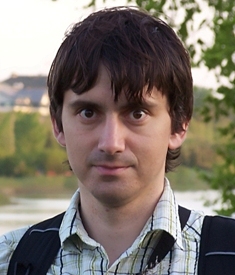|
|
Post-doc ProfilesMcIntosh LabVasily Vakorin
 My research focuses on developing and testing mathematical and computational techniques for analyzing functional MRI, EEG, and MEG data. Specifically, I am interested in methods for studying functional integration in the human brain. Currently, I am working on inferring causal relations between neural activity in different brain regions. Small Lab Roma Siugzdaite Breakspear Lab Stuart KnockI am pursuing two interrelated lines of research, each of which incorporates multiple ongoing and planned projects. First is the development and application of novel analysis algorithms designed to detect and characterise the dynamic interdependencies between the neural activity in distinct brain regions, that are believed to underlie McAndrews Lab Andrea Protzner
Most neuroimaging research focuses on task-related changes in mean brain signal. Recent computational modeling suggests that variability in brain signal may provide a unique and complementary view regarding brain function. Specifically, variability may be an important parameter reflecting both the processing capacity and the functional integrity of neural systems (e.g., Jirsa, Arch Ital Biol, 2010). My research goal is to establish brain signal variability as a biomarker that will allow us to measure the functional integrity of neural systems in the context of focal or diffuse brain damage. I currently work with patients with unilateral medial temporal lobe (mTLE) epilepsy, and my research follows two parallel streams. In the first stream, my hypothesis is that signal variability tracks tissue integrity in a parametric fashion. Thus, brain tissue at the epileptogenic focus will have the least signal variability, and brain tissue exposed to fewer seizures will have greater signal variability. In the second stream, I focus on the networks that support preserved and impaired behavior. My hypothesis is that greater variability will be demonstrated in networks that support behavior characterized by functional resilience or compensation compared with those that support impaired behavior. |
© 2011 - 2012 Baycrest. All Rights Reserved.



